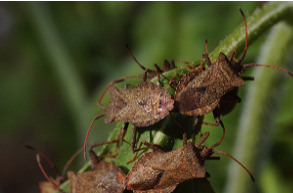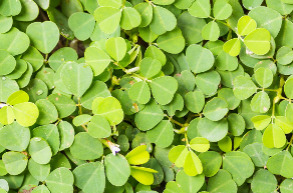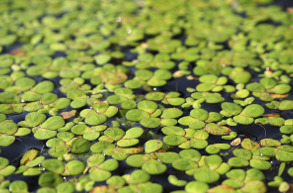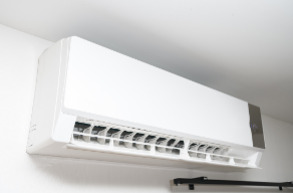Lawn Burweed Control
Most Effective Products
Lawn Burweed Control: How to Get Rid of Lawn Burweed
This page is a general lawn burweed control guide. Using the products and methods suggested, you will get control of lawn burweed. Follow this guide and use the recommended products, and we guarantee 100% control of lawn burweed.
Lawn burweed, more commonly called stickerweed, spurweed, field burrweed, lawn burrweed, burr weed, common soliva, and onehunga weed is a problematic winter annual weed of the aster family. This low growing, freely branched broadleaf weed can make itself quickly known to any homeowner walking bare-foot across their lawns as its sharp, spiny burs attaches itself on their clothing and skin.
This winter annual weed does very well to grow in the fall and winter season throughout the southeast and southwest portion of the United States. It begins to become a nuisance to homeowners during the spring, when the flowers turn into seeds or burs because of the pointed spines. Besides being unsightly and painful, dense infestations of lawn burweeds can be extremely difficult for turfgrasses. With the weed and your turf fighting for sunlight, soil moisture, and plant nutrients can severely stunt the lawns rate of growth and aesthetic appearance.
Even though lawn burweed is only a small winter annual weed, it is excellent at reproduction by quickly spreading throughout your lawn in a short amount of time. Read on to learn how to control lawn burweed infestations in your homes yard by using the recommended products and tips.
Identification

Before proceeding with an treatment approach, you will need to make sure that the weed infesting your yard is a lawn burweed. Misidentification can lead you to using the wrong treatment methods, costing you time and money. Here are some identifying characteristics of what lawn burweed looks like so you can easily identify it.
- Numerous stems growing outward from the central base.
- Light to dark green colored leaves that point in numerous opposite directions and twice divided into separate narrow lobes. With its small feathery leaves and spacing imitates the appearance of parsley, which its commonly mistaken for. Lawn burweed can be differentiated from parsley by its sharp spines.
- Flowers, which occur in the early spring, are small in size and colored green or yellow. They are often found clustered in the axilis of the leaves.
- Fruits which occur after flowering, appear as clusters measuring about 1/8 to 1/5 inches. These fruits have sharp, winged spines with two curved teeth flank on either side of the spine.
- Produce oval shaped seeds (burs) in each fruit, which are flat and armed with sharp spines that are painful when stepped on or brushed against. The seeds tend to sting to clothing and animal fur hence the nickname stickerweed.
Use the description and image above to help you properly identify lawn burweed on your property. If unsure, then contact us with an image of your weed by phone, email, or in-person at one of store locations. By doing so, we will assist you with weed identification as well as suggest treatment options.
Inspection
 Once you have confirmed lawn burweed on your property, you can then move forward with inspection. During this phase, you will locate the areas where lawn burweed is growing and observe the conditions allowing the weed to thrive.
Once you have confirmed lawn burweed on your property, you can then move forward with inspection. During this phase, you will locate the areas where lawn burweed is growing and observe the conditions allowing the weed to thrive.
Where to Inspect
Lawn burweed appears in thin, warm-seasoned turf that is consistently used like near playgrounds, front and back yard, and your homes lawn so it can spread by mowing, and people or animals passing by.
What to Look For
As a winter annual weed, lawn burweed germinates throughout moist soil and thin turf in the fall and winter months as temperatures cool. It will remain small and inconspicuous during these seasons. However, as temperatures begin to slightly rise, lawn burweed will begin to form burs in the leaf axil.
Since this weed depends on cooler temperatures to survive, the lawn burweed will wither away leaving only the painful seeds behind when temperatures reach 90 degrees Fahrenheit. When summer arrives, the plant will turn brown with only the stickers or burs left on the plant.
Stems of lawn burweed branch at the bottom and sometimes have dark or purple spots, which homeowners can mistake for southern brassbuttons. However, lawn burweed leaves are shorter than southern brassbuttons and have a palm shape.
Treatment
With any type of pesticide material, you will need to wear the proper personal protective equipment (PPE) to avoid coming into contact with the product being used and the stickers of the weed.
Since lawn burweed spreads and reproduces by seeds, the best way to control it is to remove the weed before it has a chance to develop seeds, or flowers with a pre-emergent herbicide containing either dicamba, metsulfuron, prodiamine, dithiopyr, atrazine, or isoxaben. Its recommended to use a pre-emergent during late September to October when germination occurs.
While pre-emergent control is ideal it may not be plausible for some homeowners. For this reason, you will want to use a post-emergent herbicide containing one of these active ingredients such as 2,4-D, simazine, dicamba, sulfentrazone, metsulfuron, mecoprop, fluroxpyr, or auxin. A post-emergent herbicide application should be done from November to February.
Step 1: Apply Pre-Emergent Herbicide
 Expel Turf Herbicide is an excellent concentrate herbicide that offers pre- and post-emergent control over 50 types of weeds in turf. More specifically, this product offers both pre-emergent and post-emergent control over lawn burweed in cool and warm-seasoned turf.
Expel Turf Herbicide is an excellent concentrate herbicide that offers pre- and post-emergent control over 50 types of weeds in turf. More specifically, this product offers both pre-emergent and post-emergent control over lawn burweed in cool and warm-seasoned turf.
Keep in mind this weed is called by its secondary name spurweed under the pre-emergence section of this label.
Determine how much Expel Turf Herbicide to use by measuring the treatment areas square footage. To do this, measure the length and width of the treatment site in feet then multiply them together (length X width = square footage). For acreage, take the square footage and divide it by one acre (square footage / 43,560 sq. ft. = acreage).
For cool-seasoned grasses, apply 4 to 8 oz. of Expel Turf Herbicide per 10 gallons of water per acre. For warm-seasoned grasses, use 8 to 12 oz. of product per 10 gallons of water per acre.
After mixing the product, spray the mixed solution over the top of your lawn on a fan spray setting to achieve uniform application, but avoid overlaps and runoff.
Wait until treated areas are completely dry before allowing people and animals to enter.
Step 2: Apply Post-Emergent Herbicide

2,4-D Amine Selective Post-Emergent Herbicide is a liquid formulated product designed to control a variety of emerged weeds, such as stinging nettle. Once stinging nettle has been treated with this product its active ingredient 2,4-D 46.8% will travel from the stem to the roots to completely eliminate the weed.
Fahrenheit Herbicide is a water-soluble product that offers selective control over various types of broadleaf and grassy weeds like stinging nettle in warm-seasoned turf.
In cool-season grasses, we recommend 2,4-D Amine. The labeled application rate for spot treatments with this product is 3.16 pints of concentrate per 1 acre. For smaller applications, this breaks down to 1.1 fluid ounces of concentrate applied over 1,000 square feet.
In warm-season grasses, we recommend Fahrenheit Herbicide. For spot applications, mix 0.2 ounces of the product per 1 gallon of water to apply over 1,000 square feet.
Keep in mind that when making applications over St. Augustinegrass, Bermudagrass, or Zoysiagrass, temporary stunting or chlorosis may occur.
Spray the top and bottom of the lawn burweed leaves until wet, but not to the point of runoff.
If weeds are still occurring after first application, then a second treatment may be needed.
Reapplication intervals with 2, 4-D Amine Selective Post-Emergent Herbicide range from 21 to 30 days. Reapplication intervals with Fahrenheit Herbicide range from 4 to 6 weeks.
Prevention

Once lawn burweed has been eliminated from your yard, you will to ensure this invasive weed does not return. Listed below are some preventative measures to take to lessen the chances of lawn burweed from returning.
- Apply Expel Turf Herbicide for pre-emergent use from late September to October to control lawn burweeds possibly germinating in your lawn.
- Mow when your turf reaches a height of 3 inches to encourage thick turf growth that lawn burweeds cannot easily grow through.
- Rake your lawn when leaves, branches, and other plant debris has fallen on it to avoid moisture buildup and thinning of turf.
- Continually water your lawn with an inch of irrigation at least once a week to control moisture levels and encourage new plant growth.
- Fertilize your lawn with a slow-release granular fertilizer like Solutions 15-5-10 Weed & Feed Fertilizer with Trimec throughout the spring season. This will help to replenish your turfs nutrient needs and encourage thick growth to lessen space for lawn burweed growth. Use 3.2 to 4.0 lbs of Solutions 15-5-10 Weed & Feed Fertilizer with Trimec per 1,000 sq. ft. Adjust your push or broadcast spreader to the proper calibration then spread the granules evenly across the treatment area. Wait 1 to 2 days after application then thoroughly water the granules in to activate them.
- Consistently retreat emerged lawn burweeds when they first appear on your lawn with a post-emergent herbicide like 2,4-D Amine Selective Post-Emergent Herbicide or Fahrenheit Herbicide.
Key Takeaways
What is Lawn Burweed?
- Lawn burweed is a common winter annual weed that begins to show late winter to early spring. Once this weed creates its burs they become a nuisance to homeowners with its sharp, painful spines and deplete the turfs essential nutrients for growth.
How to Get Rid of Lawn Burweed
- To get rid of lawn burweed, you will need to use a post-emergent herbicide like 2,4-D Amine Selective Post-Emergent Herbicide or Fahrenheit Herbicide from November to February.
Preventing Lawn Burweed Reinfestation
- Prevent lawn burweed establishment by applying Expel Turf Herbicide during late September to October when weeds are usually germinating in turf.


























































































































































































































































































































































































































































































































